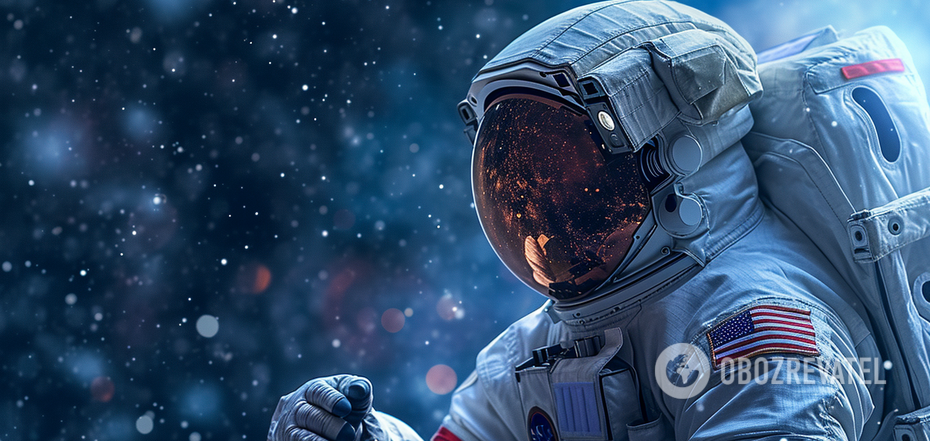News
What astronauts are not allowed to take into space: unnecessary and dangerous things
One of the most noticeable differences between the conditions on Earth and in space is the absence of gravity. Our planet attracts us to itself and we can move freely on its surface. While in interplanetary space, the influence of gravity from planets and stars is so small that objects fly freely. And this is what can be dangerous on board a spacecraft.
Discover Magazine told us about ordinary earthly things that can become a source of great danger in space. Or turn out to be a useless cargo that will only burn extra fuel. That's why astronauts are not allowed to take them with them on the flight.
Chairs
Remember these popular posters on the Internet: an astronaut in full gear sitting on a garden chair on the surface of the Moon and looking at the Earth in the sky. In reality, this is nothing more than a fantasy. Chairs are not taken into space. With minimal gravity, you won't be able to sit on such furniture. Nor can you put them anywhere without attaching the object to the floor. Therefore, chairs are considered more dangerous than useful.
So where do astronauts sit when they eat?
Since it is impossible to sit down at a table in microgravity, astronauts try to keep their balance while eating. They float in the air and eat specially packaged food to avoid messes on board. There are also trays for food that are attached to the wall or the astronaut's lap with fabric fasteners.
Pens and pencils
In the 1960s, at the very beginning of space exploration, NASA specialists discovered that it was almost impossible to use ink or ballpoint pens in zero gravity. The absence of gravity prevents the ink from coming out through the tip of the pen and transferring to the paper. Pencils could have solved the problem, but a piece of broken stylus posed a danger to the crew. It could also get stuck in important electronic parts of the equipment. In addition, the flammable wooden body of the pencil increases the risk of fire on board.
So how do astronauts write in space?
Since 1968, every NASA spacecraft with its crew has been carrying a special anti-gravity pen called the Fisher Space Pen, developed by Paul Fisher. The core of this pen uses an ink cartridge that is pressurized by nitrogen, which allows it to be used even in zero gravity.
Bread
For the same reason that pencils are undesirable on board a spacecraft, bread is also banned. Cleanliness in zero gravity is of paramount importance, and bread crumbs violate this requirement by flying in all directions. In addition, bread has a short shelf life.
So what do astronauts make their sandwiches out of?
A morning peanut butter and jelly sandwich is quite affordable on board the ISS. It's just that instead of regular bread, the astronaut will eat it on a tortilla, a thin flatbread typical of Mexican cuisine. This type of bread produces a minimal amount of crumbs.
Carbonated drinks
What problems can a liquid with carbon dioxide bubbles cause in zero gravity? Actually, they are quite big. Due to microgravity, the dissolved carbon dioxide in such drinks does not separate and rise to the top, as it does on Earth. And instead of going out through the nose after drinking the drink, it can cause astronauts to experience reflux-like symptoms. And it is not easy to treat it on a spacecraft. In addition, drops of the drink can start flying freely on board the ship, which is dangerous. Similarly, cans or bottles of carbonated drinks are not useful cargo, so it is not recommended to take them with you.
What if you want a mineral water or a coke soda in space?
Water is sent along with the astronauts because it is a matter of their survival. If they really want to give it a certain flavor, they can use special freeze-dried mixtures that can be dissolved in water. However, whole milk and alcohol are not allowed on board because they contain substances that can damage the ship's equipment.
Salt and pepper
Any seasoning is a source of the same dangerous small particles. Accidentally spilled, they begin to move freely around the ship, can fly into electronics, clog air purifiers and damage filters. Therefore, they are not allowed to be taken with you in the usual format.
So what if the astronaut's meal is not salted enough?
For such cases, a small amount of salt and pepper is loaded onto the ship in liquid form. But it is not recommended to abuse them either.
Ice cream
Even in earthly conditions, ice cream can easily create a big mess. But here we can clean it up in a matter of minutes, while in space it becomes a source of major problems and dangers. In addition, the product has a short shelf life.
So no popsicles for the rest of the flight?
Actually, no. Space ice cream does exist. It is a freeze-dried product that does not require refrigeration and does not melt. It was first sent into flight with the Apollo 7 mission in 1968. However, it was not a success with the astronauts due to its lack of flavor and crumbly composition. Ironically, astronaut ice cream has become popular on Earth, especially in science museums and souvenir shops around the world.
Earlier, OBOZ.UA told what currency went to the Moon in January 2024 and why.
Subscribe to OBOZ.UA channels in Telegram and Viber to keep up with the latest events.



























